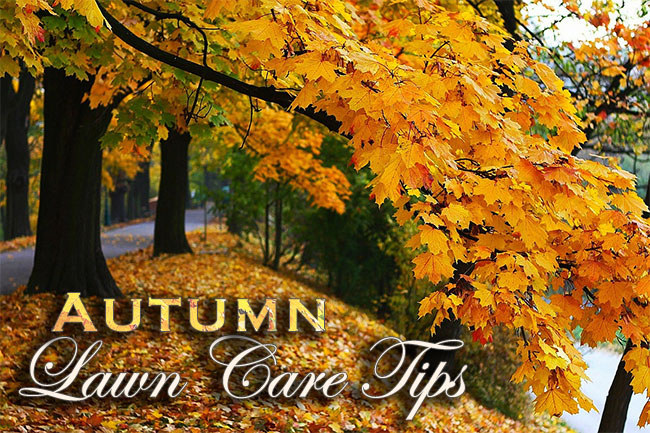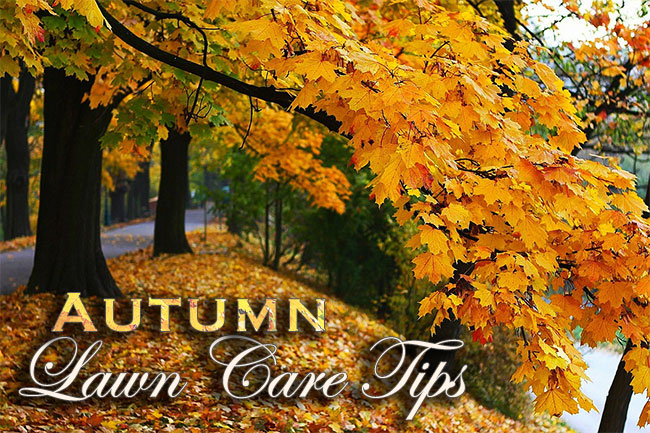
“Success depends upon previous preparation, and without such preparation there is sure to be failure.” Confucius Autumn is the time to prepare for a beautiful springtime lawn. Quite often, by March or April it is too late. In order to set ourselves up for springtime success, we need to commit to doing a little pre-work in September and October. Last year, we discussed the importance of autumn lawn care by focusing on weed control, seeding, and fertilizing. As important as those are, before executing that trifecta of fall lawn care awesomeness, we’ll need to make sure that the lawn and topsoil are prepared properly. Cleanup & Collection Removing leaves, nuts, sweetgum balls, pine cones, pine needles and various other objects that fall from the trees can be an overwhelming task without the proper equipment. Depending on the number of trees on the property, the budget, and the amount of lawnspace you need to cover, you could choose one of several different pieces of equipment to do the job. Most economical of course is a rake, which can be used to load up trash bags or a lawn cart to haul away the material. Instead, using a tow-behind lawn sweeper attachment will increase your efficiency without breaking the bank by using a ground-driven wheel to power the rotating brush assembly, collecting the material into a high-capacity hamper. If you’ve got a lot of ground to cover or just feel like going for the high-testosterone alternative, you can look into a lawn vacuum. Available in push or tow-behind models with or without branch-chipping capabilities, lawn vacuums are independently powered and shred the material as it gets sucked in. This allows you to collect more material before needing to unload. Leaves and other materials that are left to accumulate on the lawn throughout the fall ultimately get rained on and become a matted mess that suffocates the grass and promotes fungal disease. Removing them periodically allows the lawn to breathe and thrive throughout the autumn season, the time of year that allows it to focus more energy on root system development and less on foliar growth. Cut & Conditioning Imagine your lawn as a head of hair. Wait…what? Stay with me here; the grass is the hair and the topsoil is the scalp. Following that analogy there is a layer, much like dandruff, that lies beneath the surface of the grass and on top of the soil. This layer is called thatch – a mixture of grass clippings, roots and lower shoots, pieces of leaves and other organic materials that are in the process of decomposing and working their way into the soil. A thin layer of thatch is okay, beneficial even, but when it begins to build up it starts to hinder the movement of air, water, and nutrients from the surface to the root zone. It also promotes the development of shallow roots, is the ideal environment for insects to lay their eggs, and also increases the chances of fungi taking hold. It is generally accepted that a thatch layer in excess of ½” inch can begin to be a detriment to the lawn and should be removed through dethatching. As part of our autumn lawn care regimen, we need to give our beautiful head full of hair a nice cut and conditioning. As the length of the day begins to shorten and the strength of the sun begins to wane, we can afford to cut our grass a little bit shorter than we did during the hot summer months. This will improve the lawn’s ability to exchange air, and also make it easier to use a dethatcher to comb away the excess thatch. If the lawn is relatively small or the budget is tight, a lawn grooming rake may suffice. If the lawn is larger or manual labor just isn’t your idea of fun, then a tow-behind dethatcher is a good bet. With the lawn tractor doing all the hard work and working widths up to 48”, a dethatcher attachment makes the process relatively quick and painless. If you’re the Tim Allen type that salivated about the lawn vacuum earlier, a power rake might be your dethatcher of choice. Power rakes (essentially a power seeder less the hopper) use vertical cutting blades to pull up and pulverize thatch. Although significantly more expensive than a tow-behind attachment, a power rakes may be the only viable alternative for cases of severe thatch accumulation. Open the Airways The final phase of our autumn lawn care process is aeration. One of the most thorough explanations of when, why, and how to aerate was written by Dr. Robert Shearman and republished here. Briefly explained, aeration is the process of perforating the top layer of soil using a machine or attachment fitted with either spikes or “spoons”. Spike aerators are pretty self-explanatory, using small spikes to push into the soil. By contrast, plug (or “core”) aerators use metal spoons to extract small cylindrical pieces (called plugs or cores…mind-blowing, I know) of the lawn, which helps counter the compressing effects of foot traffic, etc. Plug aeration is significantly more effective than spike aeration, both in terms of improving air and water exchange and also in terms of reducing compaction. The larger diameter of the perforations in the soil allow the roots to expand into the open space, facilitating quick uptake of both air and water. If the plugs that were removed consist of heavy concentrations of clay, rake them up and remove them. If the plugs are primarily good-quality, loamy soil then you can either leave them to break down naturally or you can speed up the process by breaking them up with the backside of a rake. Depending on the quality of your soil and how well it drains during heavy rainfall, you may need to topdress with either sand or compost or a mixture of the two. Once you’ve finished cleaning up, dethatching, and aerating, phase one of our autumn lawn prep is complete! Take a few minutes to glance over our Weed, Seed, & Feed article in order to plan the second phase of your fall lawn care regimen. With both phases completed, you’ll be in a perfect position for a thick, weed-free lawn this spring that will be the envy of the whole neighborhood. Do you have any other autumn lawn care tips, tricks, or secrets that you want to share? Comment below! Author: Brad Turner


